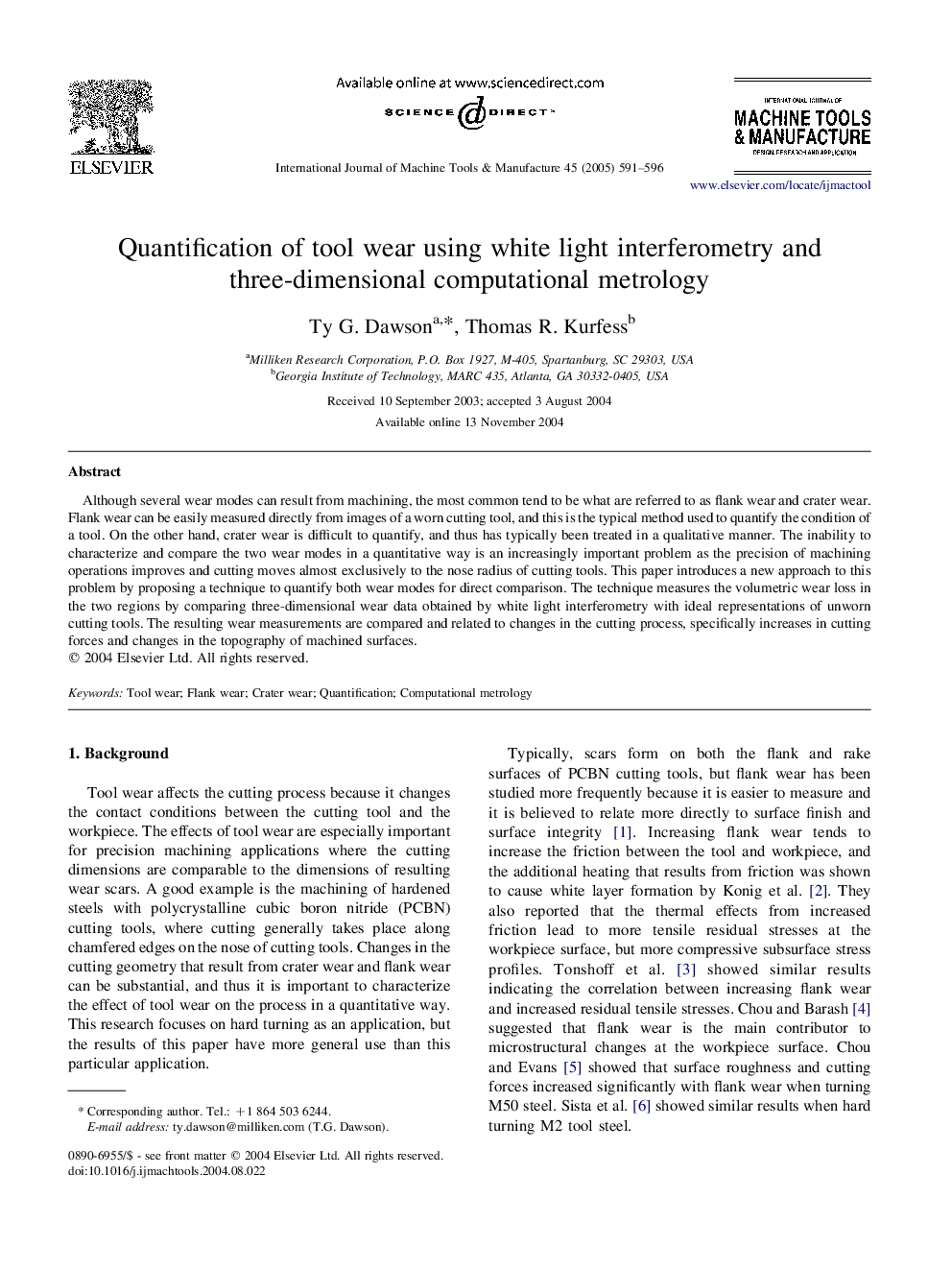| Article ID | Journal | Published Year | Pages | File Type |
|---|---|---|---|---|
| 9705393 | International Journal of Machine Tools and Manufacture | 2005 | 6 Pages |
Abstract
Although several wear modes can result from machining, the most common tend to be what are referred to as flank wear and crater wear. Flank wear can be easily measured directly from images of a worn cutting tool, and this is the typical method used to quantify the condition of a tool. On the other hand, crater wear is difficult to quantify, and thus has typically been treated in a qualitative manner. The inability to characterize and compare the two wear modes in a quantitative way is an increasingly important problem as the precision of machining operations improves and cutting moves almost exclusively to the nose radius of cutting tools. This paper introduces a new approach to this problem by proposing a technique to quantify both wear modes for direct comparison. The technique measures the volumetric wear loss in the two regions by comparing three-dimensional wear data obtained by white light interferometry with ideal representations of unworn cutting tools. The resulting wear measurements are compared and related to changes in the cutting process, specifically increases in cutting forces and changes in the topography of machined surfaces.
Related Topics
Physical Sciences and Engineering
Engineering
Industrial and Manufacturing Engineering
Authors
Ty G. Dawson, Thomas R. Kurfess,
